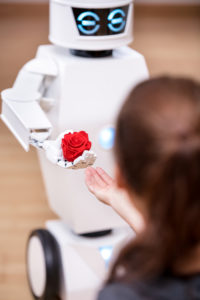 In the first three Industrial Revolutions new sources of power and mechanical inventions necessitated careful study and training of human workers so that labor was safe, effective, and productive. For example, the dancer and choreographer Rudolf Laban drew on his movement knowledge to address problems arising from the repetitive assembly line labor that characterized the second Industrial Revolution.
In the first three Industrial Revolutions new sources of power and mechanical inventions necessitated careful study and training of human workers so that labor was safe, effective, and productive. For example, the dancer and choreographer Rudolf Laban drew on his movement knowledge to address problems arising from the repetitive assembly line labor that characterized the second Industrial Revolution.
New concerns are voiced about upcoming technological changes. Klaus Schwab, Chairman of the World Economic Forum, worries that the “Fourth Industrial Revolution may indeed have the potential to “robotize humanity.” He wonders “whether the inexorable integration of technology in our lives could diminish some of our quintessential human capacities.”
Today choreographers are addressing these concerns by literally partnering with robots. For example, dancer and mechanical engineering student Catie Cuan is focusing her research on how movement and gesture can enhance the relationship between humans and robots. She models this in a TED talk, by placing her cheek against the screen or “face” of an intimidatingly large industrial robot and cradling another smaller robot in her arms, like a baby.
In another example, dancer and mechanical engineer Huang Yi dances with KUKA, a robot he conceptualized and programmed. Yi, a lovely mover, employs touch, mirroring, and synchrony in the piece set to a cello solo. While Yi tends to initiate physical contact with the robot through most of the dance, the composition closes with contact initiated by KUKA, in a touching reversal of roles.
